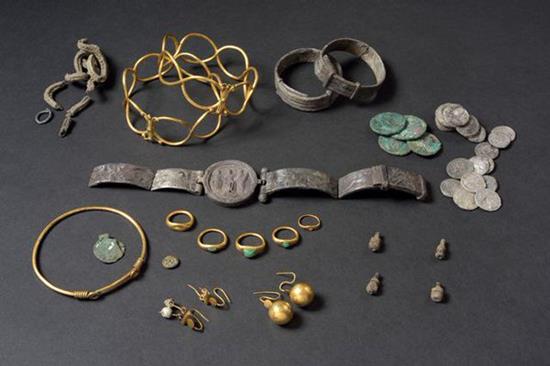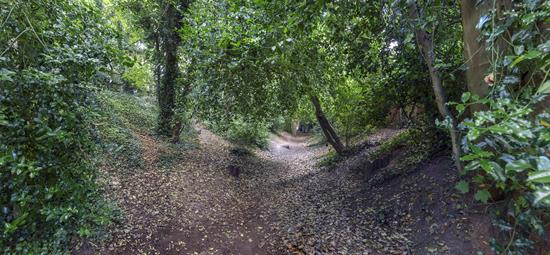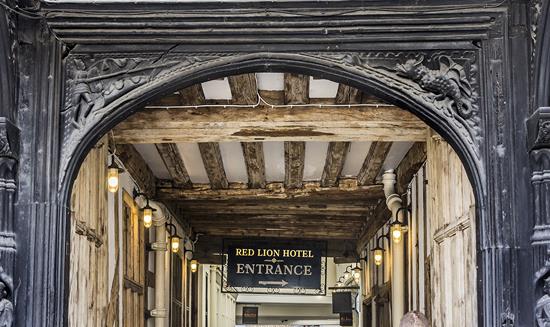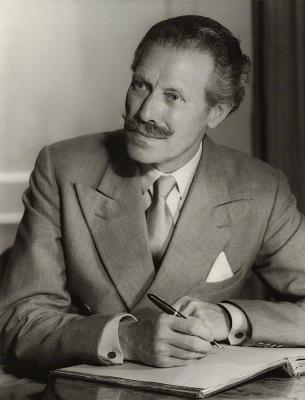During the final week of excavations in 2014 at the Williams and Griffin store at High Street, Colchester, archaeologists discovered a hoard of Roman gold and silver jewellery and coins. This is the first hoard of precious metals ever found in Colchester. It is especially significant as it was found in a small pit within the floor of a house and appears to have been buried for safekeeping during the early stages of the Boudican revolt in AD 61. The jewellery was buried under the floor of a house which was subsequently burnt to the ground, along with the rest of the town.
 The collection of jewellery included one gold and two silver bracelets, two gold and one silver armlets, five gold finger-rings, a silver chain and loop, a copper-alloy bulla (pendant worn around the neck), a glass intaglio with the incised image of a panther, a collection of Roman republican coins, and the remains of a jewellery box containing two sets of gold earrings and four of the gold finger-rings. The jewellery appears to have belonged to a wealthy Roman woman who lived in Colchester.
The collection of jewellery included one gold and two silver bracelets, two gold and one silver armlets, five gold finger-rings, a silver chain and loop, a copper-alloy bulla (pendant worn around the neck), a glass intaglio with the incised image of a panther, a collection of Roman republican coins, and the remains of a jewellery box containing two sets of gold earrings and four of the gold finger-rings. The jewellery appears to have belonged to a wealthy Roman woman who lived in Colchester.
The 'Fenwick hoard', as this collection of jewellery is known, is currently on display at Colchester Castle.
 Iron Age Colchester was protected on its western edge by a series of defensive earthworks known as the Dykes. A dyke is a bank formed from the earth dug out of a defensive ditch. When first constructed, the banks reached up to 4m in height and the ditches 4.5m deep, so they created a formidable barrier. Over time, this form of earthwork appears to have developed for different reasons. As well as being used to protect settlements from attack by warriors in chariots or from cattle raiders, the Dykes were used to confine grazing animals. In Colchester, their sheer size and extent emphasised the importance of the settlement at this time.
Iron Age Colchester was protected on its western edge by a series of defensive earthworks known as the Dykes. A dyke is a bank formed from the earth dug out of a defensive ditch. When first constructed, the banks reached up to 4m in height and the ditches 4.5m deep, so they created a formidable barrier. Over time, this form of earthwork appears to have developed for different reasons. As well as being used to protect settlements from attack by warriors in chariots or from cattle raiders, the Dykes were used to confine grazing animals. In Colchester, their sheer size and extent emphasised the importance of the settlement at this time.
Several stretches of the Colchester Dykes are still accessible for everyone to see today. Lexden Triple Dyke and Blue Bottle Grove are well-preserved examples from the Iron Age. Gryme’s Dyke is a later Roman addition to the Iron Age system and may have been built as long as 20 years after the Roman invasion in AD 43, perhaps in response to the revolt led by Boudica, the queen of the British Iceni tribe, when the town was destroyed by fire.
In 1940, the defensive importance of the Dykes was appreciated once again when the stretch known as ‘Blue Bottle Grove’ was refortified, in expectation of an imminent German invasion.
 The Red Lion Hotel is one of the earliest surviving and best-preserved buildings in Colchester town centre. The Red Lion was built originally as a town house for John Howard, Lord Howard, later the duke of Norfolk in 1481 or 1482 and the heraldic badge of the Howards is carved on the façade, over the gateway.
The Red Lion Hotel is one of the earliest surviving and best-preserved buildings in Colchester town centre. The Red Lion was built originally as a town house for John Howard, Lord Howard, later the duke of Norfolk in 1481 or 1482 and the heraldic badge of the Howards is carved on the façade, over the gateway.
Seventeen samples were taken for tree-ring dating in 2016, from different sections of the building. These indicate, perhaps surprisingly, that different sections were built within a very short timescale. Two posts from the front range provided a date of AD 1475/76 or soon after. A post from the southern hall, in the rear of the west range, was dated to AD 1475 and matched the date of a post at the rear of the east range.
By 1515 it had become a public hostelry, originally the New Inn or The White Lion, but is possible that some of the building complex could have remained in Howard occupation. After 1603, it became known as the Red Lion in honour of James VI of Scotland and I of England, whose Scottish royal arms featured a red lion.
The archway is decorated with St George and the Dragon and two male figures which possibly represent merchants or lawyers. As in previous centuries, today the lower part of the building is used for retail, with the hotel on the upper floors.
 Sir Mortimer Wheeler was one of the twentieth century’s most important archaeologists. He became famous in Britain in the early 1950s when he featured on the BBC television series Animal, Vegetable, Mineral, and in this role he popularised archaeology with the British public. Prior to this, he had been responsible for the establishment of the Institute of Archaeology at University College, London, in 1934, where he assumed the position of Honorary Director. During the late 1930s and early 1940s he excavated numerous large and complex sites, including the Iron Age hillfort at Maiden Castle in Dorset. In 1944 he was appointed Director of the Archaeological Survey of India, where he focused much of his attention on the Bronze Age civilisation of the Indus Valley.
Sir Mortimer Wheeler was one of the twentieth century’s most important archaeologists. He became famous in Britain in the early 1950s when he featured on the BBC television series Animal, Vegetable, Mineral, and in this role he popularised archaeology with the British public. Prior to this, he had been responsible for the establishment of the Institute of Archaeology at University College, London, in 1934, where he assumed the position of Honorary Director. During the late 1930s and early 1940s he excavated numerous large and complex sites, including the Iron Age hillfort at Maiden Castle in Dorset. In 1944 he was appointed Director of the Archaeological Survey of India, where he focused much of his attention on the Bronze Age civilisation of the Indus Valley.
What is perhaps less well-known about Sir Mortimer Wheeler is that he carried out his very first excavation in Colchester, in 1917, at the Balkerne Gate. This gate was the western entrance to the Roman town.
Gosbecks, located about 4 km to the south of the walled town, was probably the centre of Iron Age Colchester and possibly the home of King Cunobelin.
The Romans took over the settlement at Gosbecks and built a temple, possibly dedicated to Mercury. This would have been a religious focus for the native population.
The Romans also built a huge theatre at Gosbecks in around AD 100. Gosbecks’ theatre is the largest known from Roman Britain, seating around 5,000 people. It was probably used with the temple for assemblies, speeches, religious rites and dramatic performances.
In around AD 275 the importance of the site declined. The theatre and the temple were abandoned and dismantled and the building materials were taken away and recycled.
Today, both the theatre and the temple have completely disappeared; only the outlines can be seen marked out on the ground.
 The collection of jewellery included one gold and two silver bracelets, two gold and one silver armlets, five gold finger-rings, a silver chain and loop, a copper-alloy bulla (pendant worn around the neck), a glass intaglio with the incised image of a panther, a collection of Roman republican coins, and the remains of a jewellery box containing two sets of gold earrings and four of the gold finger-rings. The jewellery appears to have belonged to a wealthy Roman woman who lived in Colchester.
The collection of jewellery included one gold and two silver bracelets, two gold and one silver armlets, five gold finger-rings, a silver chain and loop, a copper-alloy bulla (pendant worn around the neck), a glass intaglio with the incised image of a panther, a collection of Roman republican coins, and the remains of a jewellery box containing two sets of gold earrings and four of the gold finger-rings. The jewellery appears to have belonged to a wealthy Roman woman who lived in Colchester. Iron Age Colchester was protected on its western edge by a series of defensive earthworks known as the Dykes. A dyke is a bank formed from the earth dug out of a defensive ditch. When first constructed, the banks reached up to 4m in height and the ditches 4.5m deep, so they created a formidable barrier. Over time, this form of earthwork appears to have developed for different reasons. As well as being used to protect settlements from attack by warriors in chariots or from cattle raiders, the Dykes were used to confine grazing animals. In Colchester, their sheer size and extent emphasised the importance of the settlement at this time.
Iron Age Colchester was protected on its western edge by a series of defensive earthworks known as the Dykes. A dyke is a bank formed from the earth dug out of a defensive ditch. When first constructed, the banks reached up to 4m in height and the ditches 4.5m deep, so they created a formidable barrier. Over time, this form of earthwork appears to have developed for different reasons. As well as being used to protect settlements from attack by warriors in chariots or from cattle raiders, the Dykes were used to confine grazing animals. In Colchester, their sheer size and extent emphasised the importance of the settlement at this time. The
The  Sir Mortimer Wheeler was one of the twentieth century’s most important archaeologists. He became famous in Britain in the early 1950s when he featured on the BBC television series Animal, Vegetable, Mineral, and in this role he popularised archaeology with the British public. Prior to this, he had been responsible for the establishment of the Institute of Archaeology at University College, London, in 1934, where he assumed the position of Honorary Director. During the late 1930s and early 1940s he excavated numerous large and complex sites, including the Iron Age hillfort at Maiden Castle in Dorset. In 1944 he was appointed Director of the Archaeological Survey of India, where he focused much of his attention on the Bronze Age civilisation of the Indus Valley.
Sir Mortimer Wheeler was one of the twentieth century’s most important archaeologists. He became famous in Britain in the early 1950s when he featured on the BBC television series Animal, Vegetable, Mineral, and in this role he popularised archaeology with the British public. Prior to this, he had been responsible for the establishment of the Institute of Archaeology at University College, London, in 1934, where he assumed the position of Honorary Director. During the late 1930s and early 1940s he excavated numerous large and complex sites, including the Iron Age hillfort at Maiden Castle in Dorset. In 1944 he was appointed Director of the Archaeological Survey of India, where he focused much of his attention on the Bronze Age civilisation of the Indus Valley.